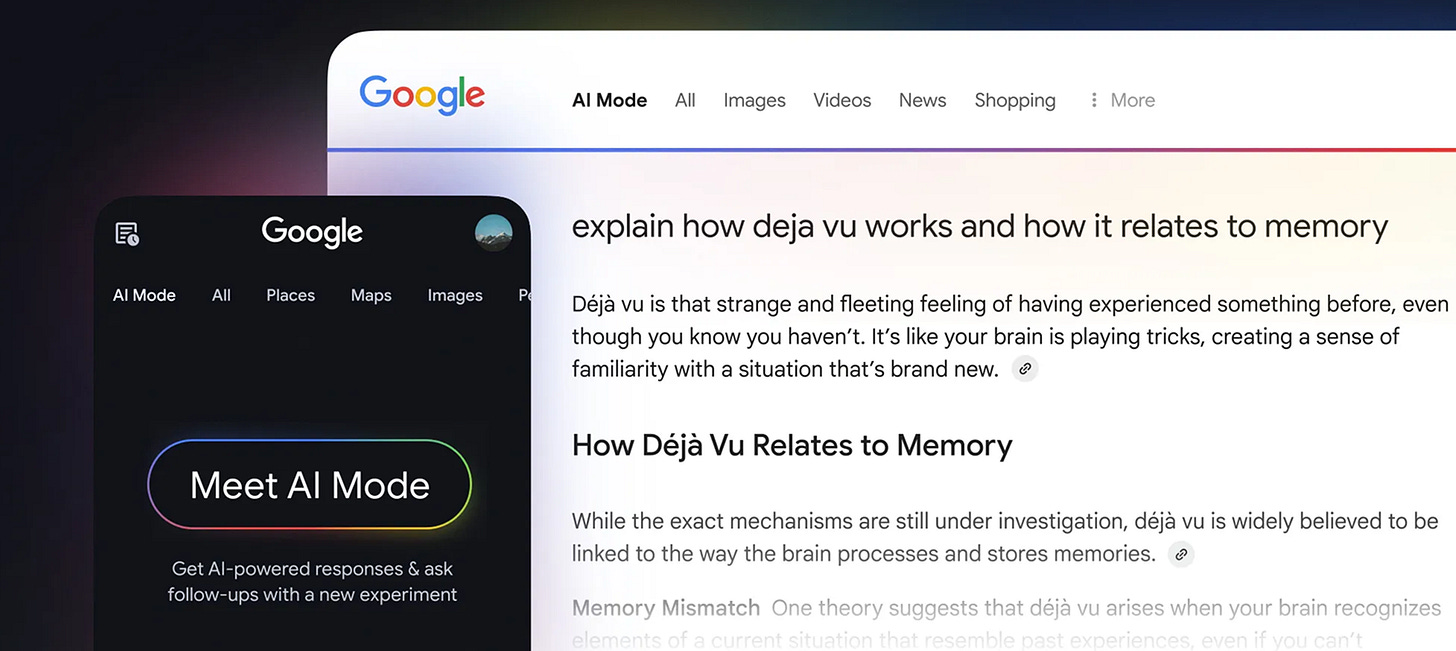How AI is shifting UX for product discovery
Time to rethink discovery UX beyond SEO
Search behavior is shifting
Two major changes are transforming how people search.
AI-powered summaries (Google AI Overview & AI Mode beta)
LLM-based searches (Perplexity, ChatGPT Search)
Both reduce organic clicks by giving users answers directly.
Zero-click search is surging
Users no longer need to click to find answers:
Almost 60% of searches end without a click. (SparkToro, 2024)1
Users make decisions inside AI, not on product websites.
Click-through rates have fallen by 27% in B2B software queries since Google introduced AI-generated summaries. (Bain, 2025)2
Zero-click search reshapes how users discover and evaluate products.
Traditional search before AI
What shapes user expectations:
Your landing page with your marketing copy
Your onboarding experience that guides users with intent
Users’ self-directed exploration
Search with AI
What shapes user expectations:
AI-generated summaries pulled from Reddit posts, reviews, and your website
Brief, simplified explanations that may overlook your key differentiators
Features AI highlights based on user queries
Why AI search matters to product makers
AI shapes users' expectations even before they visit your product website, compressing the decision-making flow.
Consequently, user’s purpose for visiting your site is changing from exploration to validation.
Actionable tips for discovery UX in AI era
✅ Map the AI discovery journey
Treat AI summaries as part of the user journey.
Audit how your product is presented before the user even interacts with your UX.
✅ Identify the gap between AI summaries and your product story
Ask diverse questions and analyze the range of answers AI provides about your product.
Interview new users to understand how AI-generated responses shape their expectations of your product.
Compare where user expectations align or diverge from their actual experience.
✅ Influence AI-readable narratives
Provide enough structured, machine-readable content to reduce hallucination.
Structure with proper headings and text tables
Include feature lists, how-tos, and FAQs
Seed content with context — the user, their problem, and when they’d need you — so AI knows when to surface your product.
✅ Design onboarding for AI-informed users
Early product UX should reinforce differentiators and clarify potential misconceptions.
Make task completion obvious from any page.
Remember: users often land directly on internal pages via AI summaries, not your homepage.
Your product now lives in two parallel worlds:
Product success depends on your ability to bridge these worlds.
💡
Do you know what AI is saying about your product?
What’s the first thing you would do to bridge the gap?
https://sparktoro.com/blog/2024-zero-click-search-study-for-every-1000-us-google-searches-only-374-clicks-go-to-the-open-web-in-the-eu-its-360/
https://www.bain.com/insights/losing-control-how-zero-click-search-affects-b2b-marketers-snap-chart/










great write up!
Food for thought! Thanks for sharing. 🪜